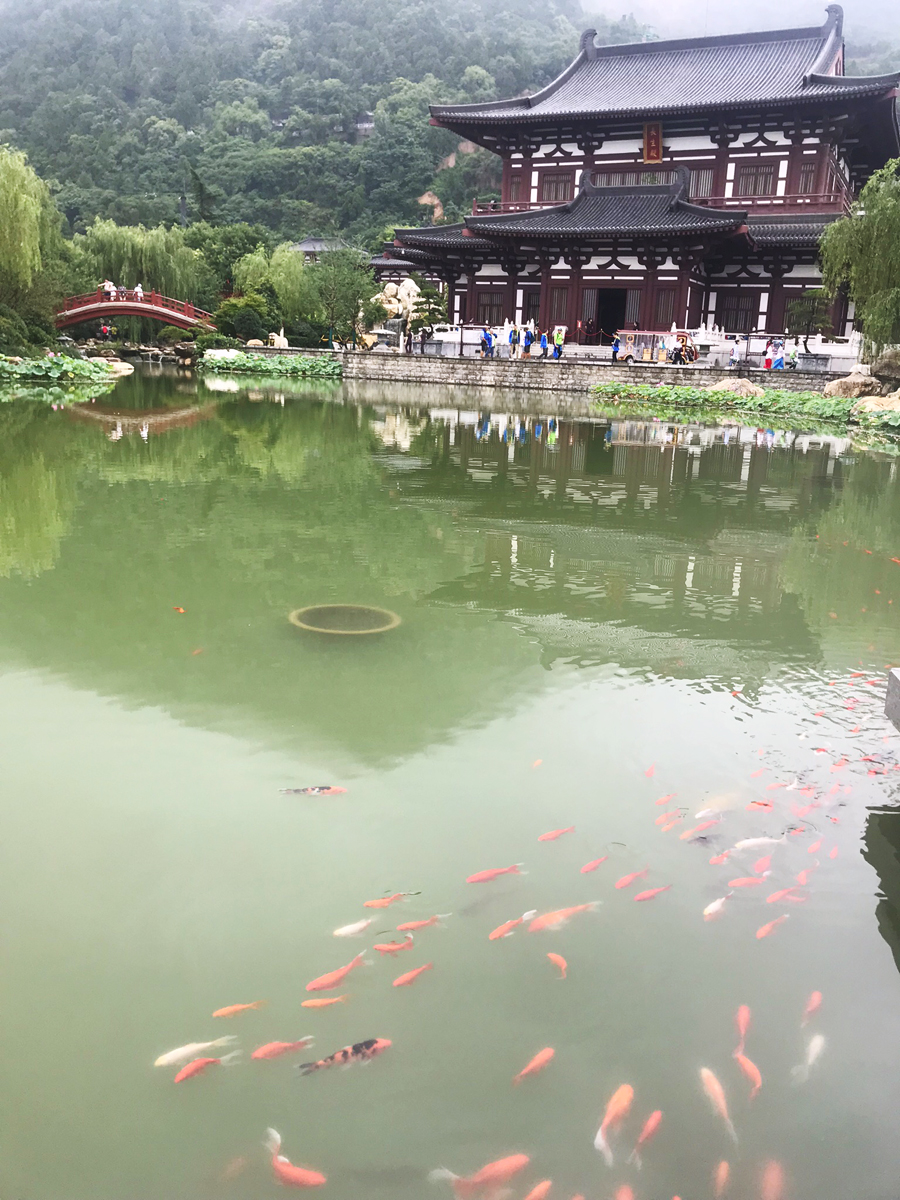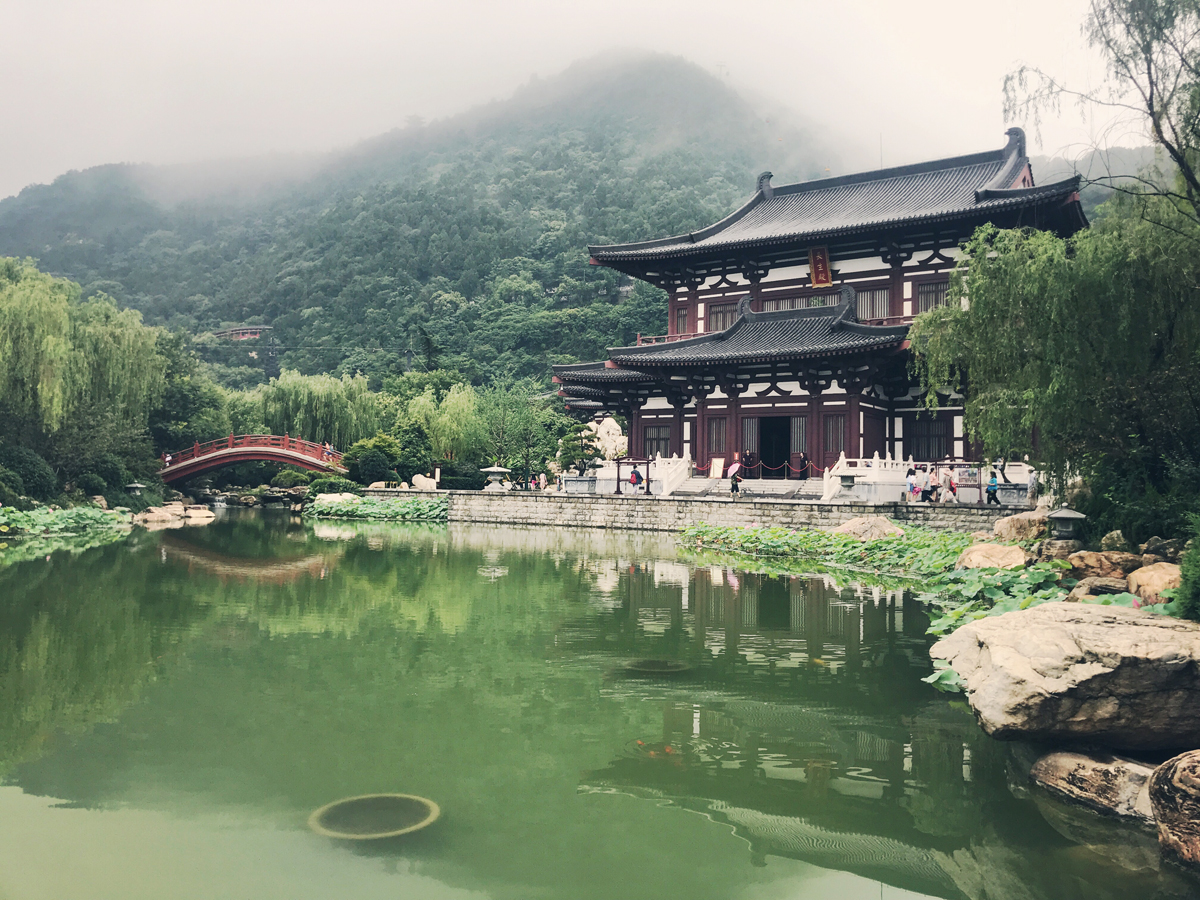
The Huaqing Hot Springs are a complex of hot springs located at the northern foot of Mount Li in Shaanxi province, just 30 kilometres (19 mi) east of Xi’an. Thanks to its unusual shape, Mount Li or Mount “Black Horse” supposedly looks like a black horse galloping through the fields. With all of the unexpected popularity that it currently enjoys, you could almost say that Mount Li is the dark horse of the Qin Mountains! Its natural beauty, coupled with the stunning architecture of the hot springs, makes this scenic spot undeniably alluring. However, it’s not just its aesthetic charm that attracts visitors, but also its captivating history.
During the Western Zhou Dynasty (c. 1046–771 BC), King You built the Li Palace at the base of Mount Li. This palace was expanded during the Qin (221-206 BC) and Han (206 BC–220 AD) dynasties, but didn’t reach its full prominence until the Tang Dynasty (618-907). Emperor Xuanzong of Tang spent huge sums of money expanding it, surrounding it with defensive walls and incorporating the nearby hot springs into its bath houses. He then renamed it Huaqing Palace and, over the course of his 44-year reign, would visit it over 36 times. In fact, he spent so long there that it eventually led to a full-scale rebellion!
His obsession with the palace began with his consort Yang Guifei [1], who was considered one of the Four Great Beauties of Ancient China and whose appearance was so striking that it supposedly put flowers to shame! Understandably Xuanzong was infatuated with her, so much so that he promoted her cousin, Yang Guozhong, to the position of imperial minister. Eventually Xuanzong began spending so much time at the palace with Consort Yang that he neglected his duties as emperor. Meanwhile, a cunning young general named An Lushan was amassing political power and was able to gain the patronage of the placable Emperor Xuanzong, which eventually led to him obtaining control of a 200,000-strong army. Since he was of Göktürk and Sogdian origin, he maintained amicable relations with several northern ethnic groups and convinced them to join forces with him. This set the foundation for the An Lushan Rebellion.
In 755 AD, An Lushan captured the eastern capital of Luoyang and declared himself Emperor of the short-lived Great Yan Dynasty (756–763). As his forces advanced on the imperial capital of Chang’an (modern-day Xi’an), Xuanzong and the Tang court were forced to flee south. However, his guards believed the Yang family were responsible for An Lushan’s rise to power and assassinated Yang Guozhong. They then demanded that Xuanzong have Yang Guifei put to death. Reluctantly, he ordered his attendant Gao Lishi to strangle her, and this became the basis for Bai Juyi’s renowned poem “The Song of Unending Sorrow”. Although An Lushan was unsuccessful in his claim to power, his rebellion weakened the Tang Empire so greatly that historians believe it was at least partly, if not completely, responsible for the collapse of the dynasty.
Yet it seemed that this wouldn’t be the last rebellion to grace the Huaqing Hot Springs, as the site was also the scene of the infamous Xi’an Incident in 1936. From 1927 through till 1936, China was embroiled in a vicious civil war between the ruling Chinese Nationalist Party (the Kuomintang) and the Chinese Communist Party. The head of the CNP, Chiang Kai-shek, dedicated all of his energy and resources to campaigns against the CCP, in spite of pleas from his colleagues Zhang Xueliang and Yang Hucheng that he focus instead on amassing power to defend against the invading Japanese army.
On December 12th 1936, Chiang Kai-shek was staying at the Huaqing Hot Springs and the warlord Zhang decided to grasp the opportunity. He instructed his army to open fire on the pavilion where Chiang was staying, but Chiang managed to escape through a window and leapt over the back wall. He was captured hours later on Mount Li, and the place where he was found is now marked by an iron chain and a pavilion. After nearly a month of being held hostage and taking part in intense negotiations, Chiang eventually agreed to an alliance with the CPC and the first Chinese Civil War ended. So you see, the Huaqing Hot Springs weren’t just a popular spa retreat, they were also a place of revolution. Maybe there really was something in the water after all!
Since much of the original palace was damaged during the An Lushan Rebellion, many of the structures you see today were either rebuilt during the Qing Dynasty (1644-1912) or after 1949. On first entering the palace’s west gate, you’ll come upon the enchanting Nine Dragon Lake. Lotus flowers float delicately on the lake’s surface and a magnificent white marble statue of Yang Guifei is reflected in its waters. Just don’t stare at her for too long, or you might get branded a Peeping Tom!

Many of the surrounding pavilions were rebuilt in the Tang style, such as the Frost Flying Hall, Yichun Hall, Five Chamber Hall, and the Dragon Marble Boat. The Frost Flying Hall was once the bedroom of Emperor Xuanzong and Yang Guifei, while the Five Chamber Hall was where Chiang Kai-shek stayed before he was captured and was also used by the infamous Empress Dowager Cixi as a refuge when the Eight-Nation Alliance captured Beijing in 1900. Evidently it wasn’t as great a hiding place as they all thought!
Yet no spa would be complete without a few luxury baths. There are a total of six bathing areas within the complex and each one had a different function. For example, the Lotus Pool was exclusively used by the Emperor and was named for its characteristic lotus-shape; the Haitang Pool is shaped like a Chinese crab-apple and was used by the Emperor’s concubines; and the Shangshi Pool was solely for the use of government officials. Nowadays the pools have been drained and cannot be used by visitors, so don’t go wearing your swimsuit under your clothes or you’ll be sorely disappointed!
- Guifei: During the Tang Dynasty (618-907), this was the highest rank that could be bestowed on an imperial consort.